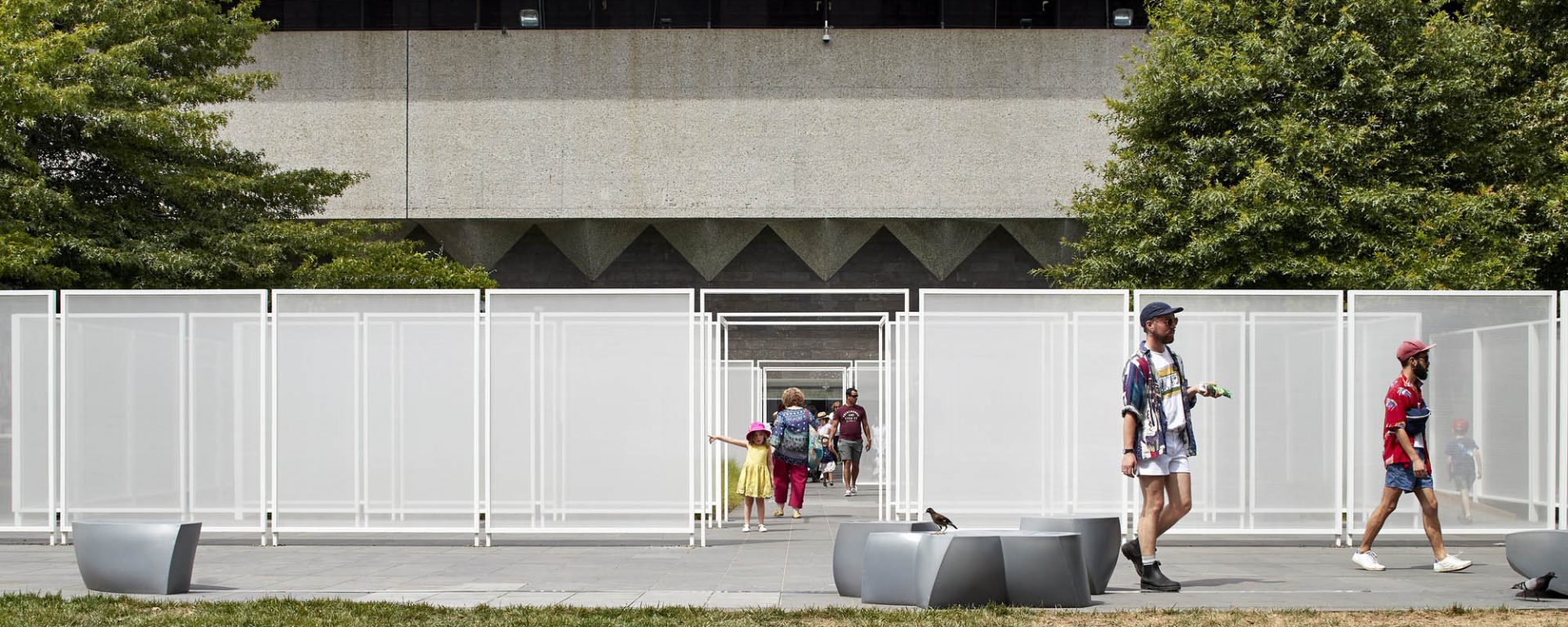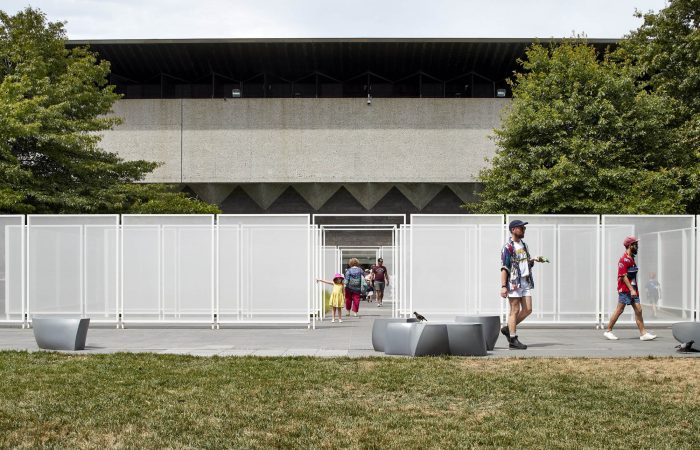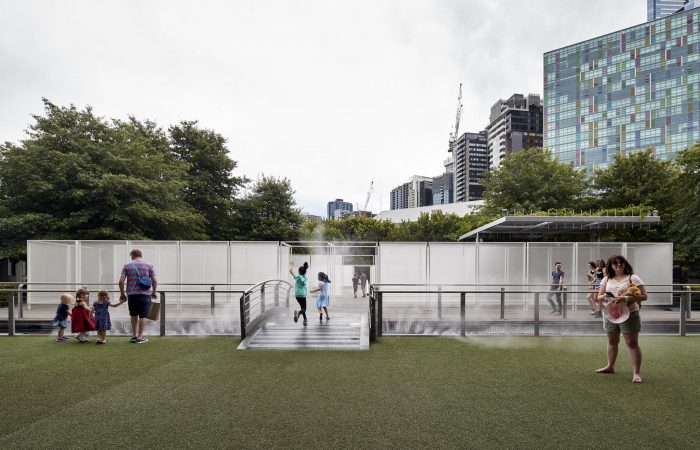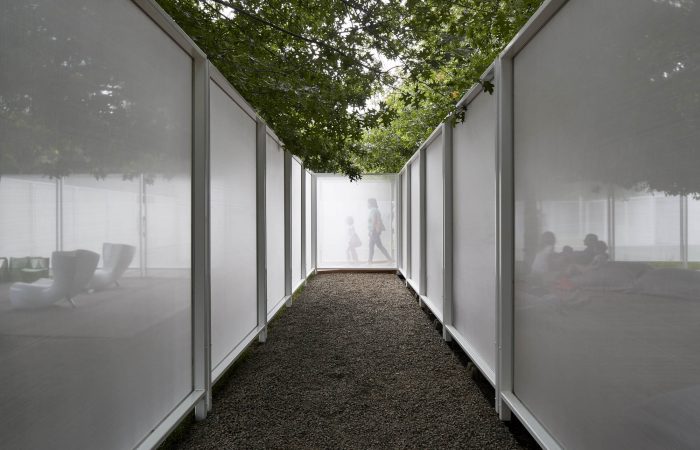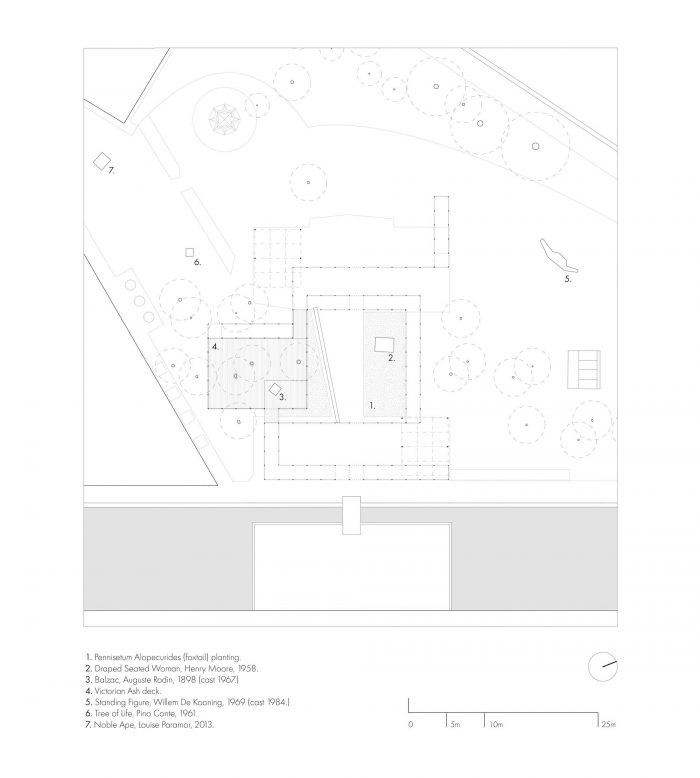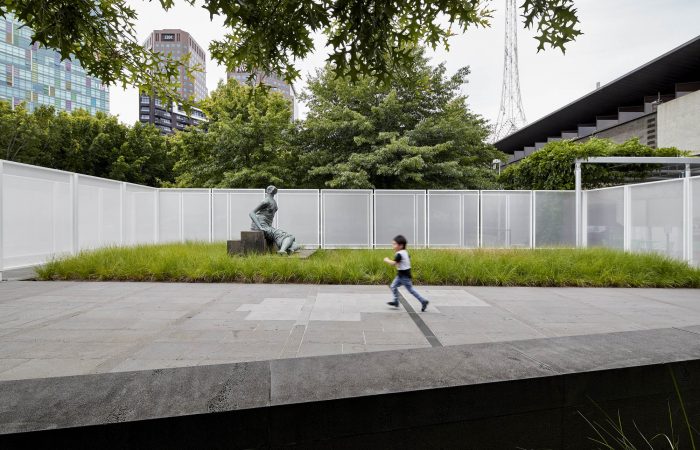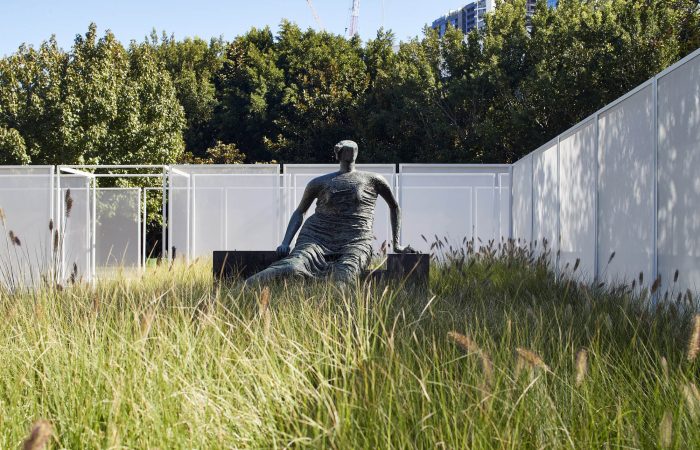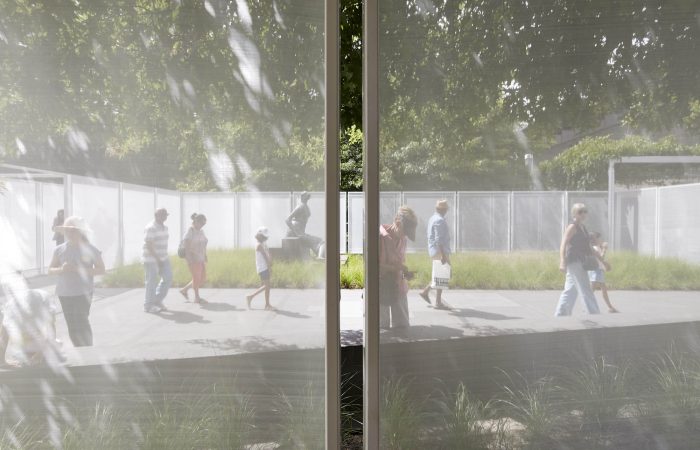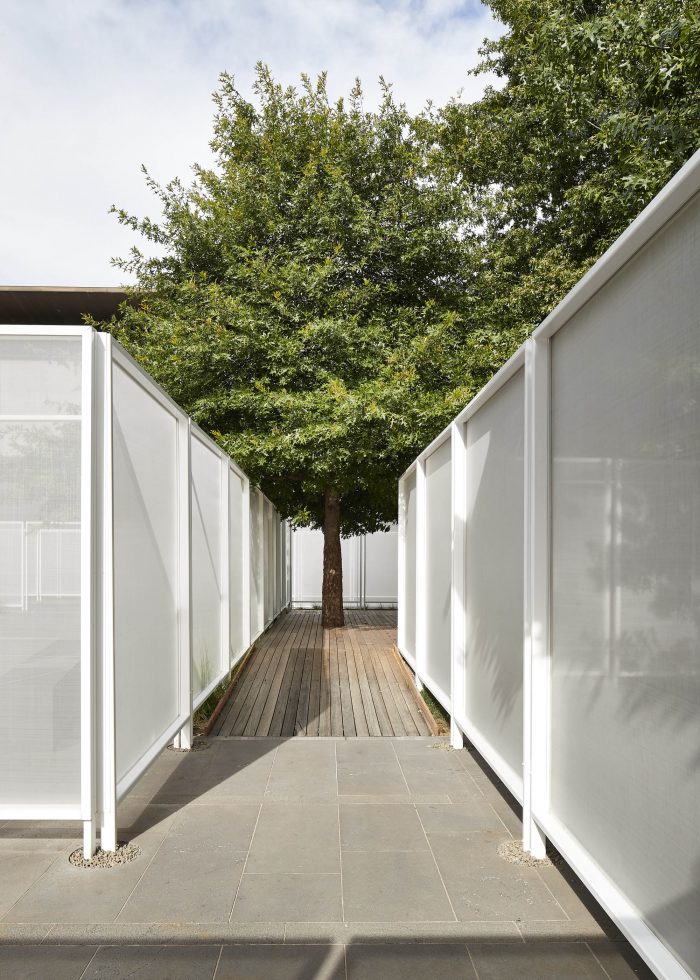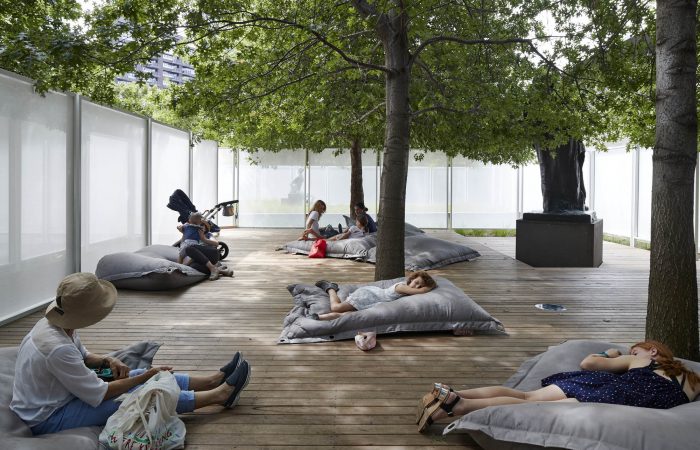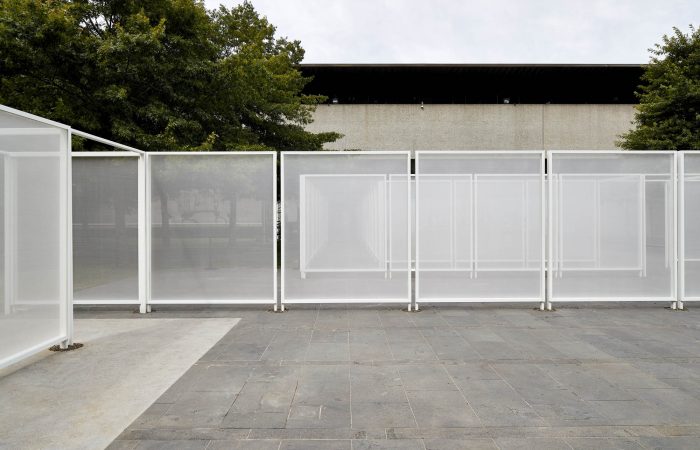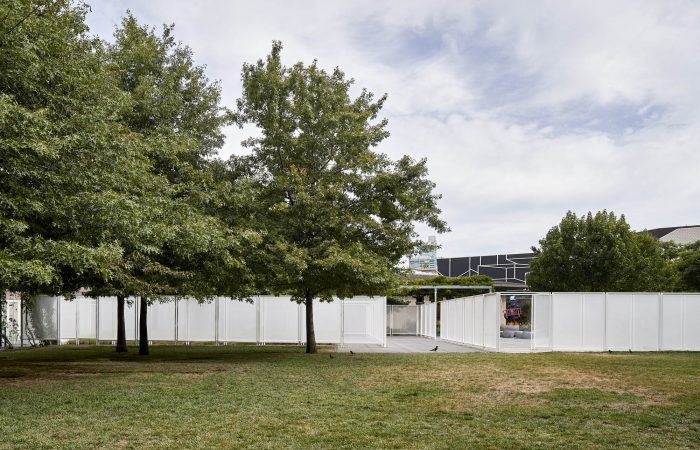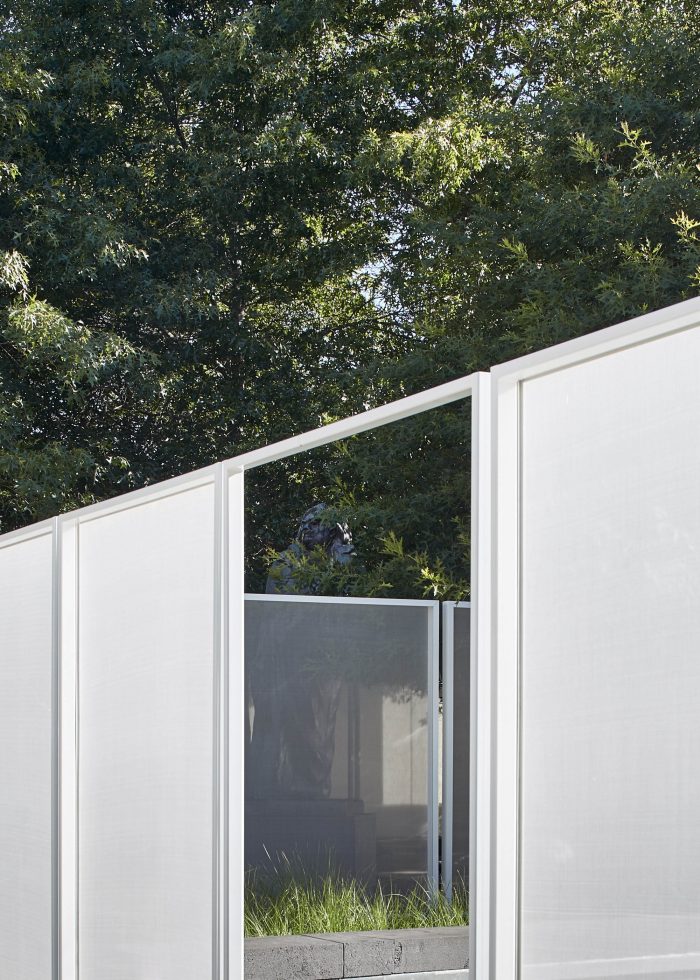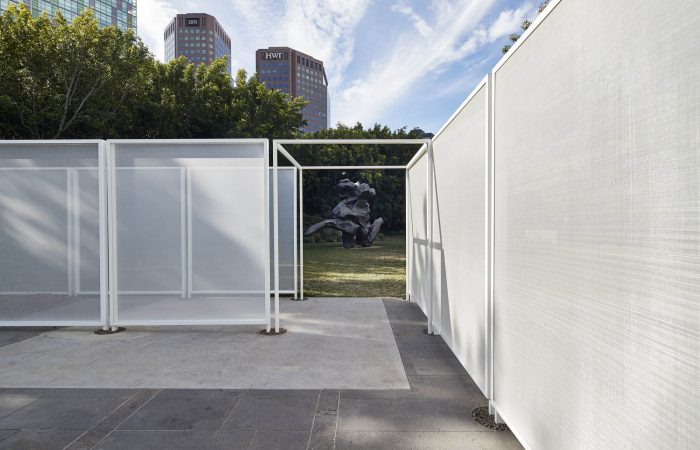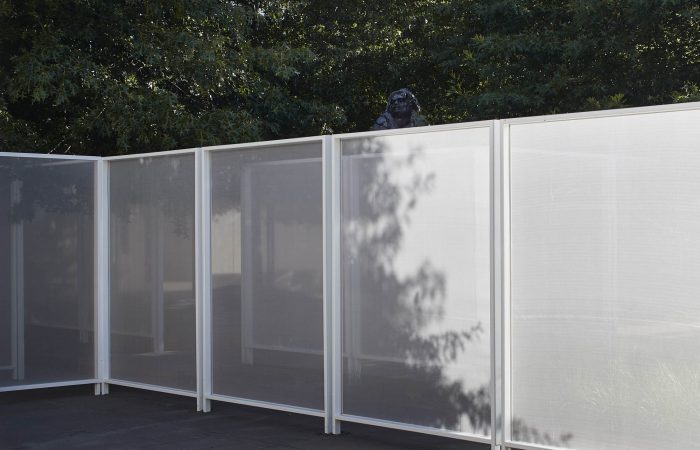为了使NGV的花园更加明显,我们首先要使其不可见。花园墙隐藏了花园,然后通过一系列的走廊、孔隙和房间逐渐展现出来。我们的装置与其说是墙本身,不如说是墙与墙之间的空间,这些空间已经潜藏在花园中。
In order to make the NGV garden more visible, we first have to render it invisible. Garden Wall hides the garden and then gradually reveals it via a series of corridors, apertures and rooms. Our installation is less the walls themselves than the spaces between, which were already latent in the garden.
花园墙是一个特定场地的装置,将NGV的Grollo Equiset花园划分为一系列的室外房间。每个房间都框住了花园里的特定特征,加强了与雕塑和家具、树木和植物、铺路和草坪的接触。微妙的触摸、声音和气味层增强了这种感官体验。墙体本身是一个简单的结构,由白色的框架包裹着编织网组成。墙的性质从半透明到不透明,从短暂的到整体的,根据一天中的时间、光线的质量、人们的运动或视线的角度,它退到背景中或引起注意。
Garden Wall is a site-specific installation that divides the NGV’s Grollo Equiset garden into a sequence of outdoor rooms. Each of the rooms frames particular features found in the garden, heightening encounters with sculpture and furniture, trees and planting, paving and lawn. Subtle touch, sound and scent layers enhance this sensory experience. The wall itself is a simple structure made up of white frames clad in woven mesh. Shifting in nature from translucent to opaque, from ephemeral to monolithic, the wall recedes into the background or commands attention depending on time of day, quality of light, movement of people or angle of view.
墙起源于包围最早的人类营地的粗糙的栅栏和护堤,是最基本的建筑。但并不存在基本的或中性的墙。没有墙,就不可能有检查站、防御工事、监狱或飞地。任何将人隔离的结构都具有内在的政治性。通过封闭花园的某些部分,排除其他部分,扩展路径,同时使通行复杂化,花园墙为讨论建筑的政治层面和墙壁、边界和障碍的全球扩散提供了一个开口。
Originating in the crude fences and berms that enclosed the earliest human encampments, walls are architecture at its most elemental. But there is no such thing as a basic or neutral wall. Without walls there could be no check points, fortifications, prisons or enclaves. Any structure that separates people is inherently political. By enclosing certain parts of the garden and excluding others, extending pathways while complicating passage, Garden Wall provides an opening for discussing architecture’s political dimensions and the global proliferation of walls, borders and barriers.
Architects: Retallack Thompson & Other Architects
Year: 2017
Photographs: Peter Bennetts
City: Melbourne
Country: AUSTRALIA

